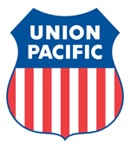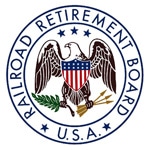4th Quarter 2016
Net Earnings: $458 million or $0.49 per share, up from $466 million or $0.48 per share in 2015’s 4th quarter
Revenue: Increased by 9 percent to $3,037 billion
Operating Income: Increased to $1 billion over last year’s $791 million
Operating Ratio: 67 percent, an improvement over last year’s 71.6 percent
2016 Annual Earnings
Net Earnings: Decreased to $1.7 billion or $1.81 earnings per share, down from $1.96 billion or $2.00 per share in 2015
Revenue: Decreased to $11.1 billion from $11.8 billion in 2015
Operating Income: Decreased $3.4 billion from $3.6 billion in 2015
Operating Ratio: 69.4 percent
Click here to read CSX’s full earnings report
4th Quarter 2016
Net Earnings: Net income increased by 20 percent to C$3.84 million; diluted earnings per share increased 25 percent to C$2.61 from fourth quarter 2015’s reported C$2.08
Revenue: Decreased 3 percent to C$1.64 billion from C$1.69 billion
Operating Income: Increased 6 percent to C$717 million over fourth quarter 2015’s C$677 million
Operating Ratio: 56.2 percent, a record low
2016 Annual Earnings
Net Earnings: Net income increased by 18 percent to C$1.6 billion from C$1.4 billion; diluted earnings per share increased 27 percent to C$10.63 from C$8.40
Revenue: Decreased 7 percent to C$6.23 billion from 2015’s reported C$6.71 billion
Operating Income: Decreased 4 percent from 2015’s C$2.7 billion to C$2.6 billion
Operating Ratio: 58.6 percent, a record low
Click here to read CP’s full earnings report
4th Quarter 2016
Net Earnings: $1.1 billion or $1.39 per diluted share, an increase of 6 percent
Revenue: Down 1 percent to $5.2 billion
Operating Income: Up 2 percent to $2.0 billion
Operating Ratio: Improved by 1.2 points to 62.0 percent
2016 Annual Earnings
Net Earnings: Decreased by 11 percent to $4.2 billion or 8 percent to $5.07 per diluted share, down from 2015’s reported $4.8 billion or $5.49 per diluted share
Revenue: Decreased to $19.9 billion from $21.8 billion
Operating Income: Decreased by 10 percent to $7.3 billion
Operating Ratio: Increased 0.4 points to 63.5 percent
Click here to read UP’s full earnings report
4th Quarter 2016
Net Earnings: Decreased by 5 percent to $130 million or $1.21 earnings per share
Revenue: Static at $599 million
Operating Income: Decreased by 4 percent to $211 million
Operating Ratio: 64.8 percent, a 1.4 point increase from 2015’s 4th quarter report of 63.4 percent
2016 Annual Earnings
Net Earnings: $480 million or $4.43 per share, down from 2015’s reported $485 million or $4.40 per share
Revenue: Down 3 percent to $2.3 billion
Operating Income: Increased by 2 percent to $819 million
Operating Ratio: 64.9 percent, a 1.9 point improvement over 2015
Click here to read KCS’s full earnings report
4th Quarter 2016
Net Earnings: Increased 8 percent to C$1,018 million; diluted earnings per share increased 12 percent to C$1.32
Revenue: Increased by 2 percent to C$3,217 million
Operating Income: Increased by 3 percent to C$1,395 million
Operating Ratio: 56.6 percent, an improvement of 0.6 points
2016 Annual Earnings
Net Earnings: Increased 3 percent to C$3,640 million; diluted earnings per share rose 6 percent to C$4.67
Revenue: Decreased by 5 percent to C$12,037 million
Operating Income: Increased 1 percent to C$5,312 million
Operating Ratio: Improved 2.3 points to 55.9 percent
Click here to read CN’s full earnings report
4th Quarter 2016
Net Earnings: Increased 15 percent to $416 million; diluted earnings per share increased 18 percent to $1.42
Revenue: Decreased 1 percent to $2.5 billion
Operating Income: Increased 19 percent to $761 million
Operating Ratio: 69.4 percent, a 510 point improvement over 74.5 percent reported for the fourth quarter of 2015
2016 Annual Earnings
Net Earnings: Increased 7 percent to $1.7 billion; diluted earnings per share increased 10 percent to $5.62
Revenue: Decreased by 6 percent to $9.9 billion
Operating Income: Increased 7 percent to $3.1 billion
Operating Ratio: Improved 370 points to 68.9 percent as compared to 2015’s reported 72.6 percent
Click here to read NS’s full earnings report
Note: Operating ratio is a railroad’s operating expenses expressed as a percentage of operating revenue, and is considered by economists to be the basic measure of carrier profitability. The lower the operating ratio, the more efficient the railroad.





 The Railroad Retirement Board (RRB) is required by law to submit annual financial reports to Congress on the financial condition of the railroad retirement system and the railroad unemployment insurance system. These reports must also include recommendations for any financing changes which may be advisable in order to ensure the solvency of the systems. In June, the RRB submitted its 2014 reports on the railroad retirement and railroad unemployment insurance systems.
The Railroad Retirement Board (RRB) is required by law to submit annual financial reports to Congress on the financial condition of the railroad retirement system and the railroad unemployment insurance system. These reports must also include recommendations for any financing changes which may be advisable in order to ensure the solvency of the systems. In June, the RRB submitted its 2014 reports on the railroad retirement and railroad unemployment insurance systems.